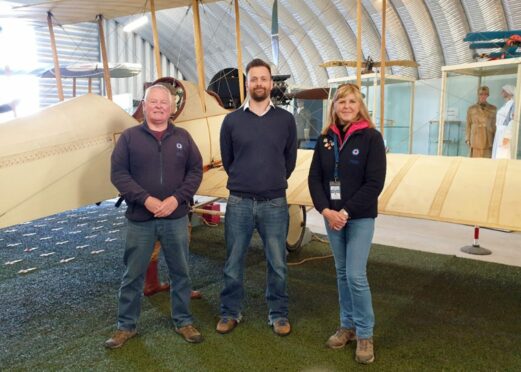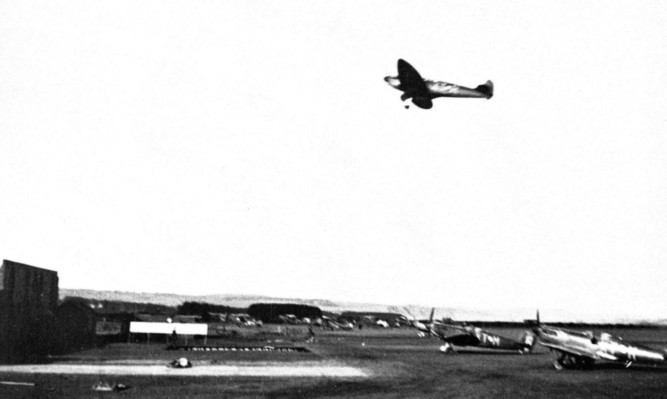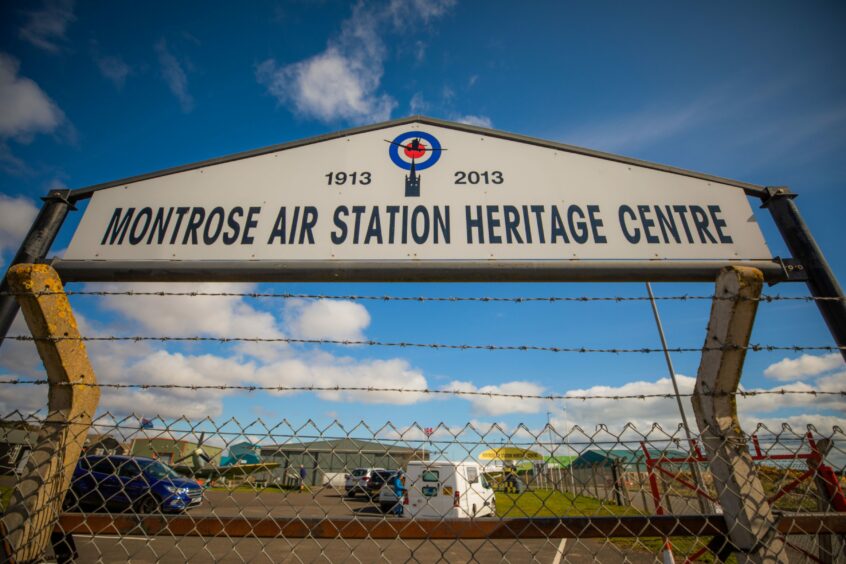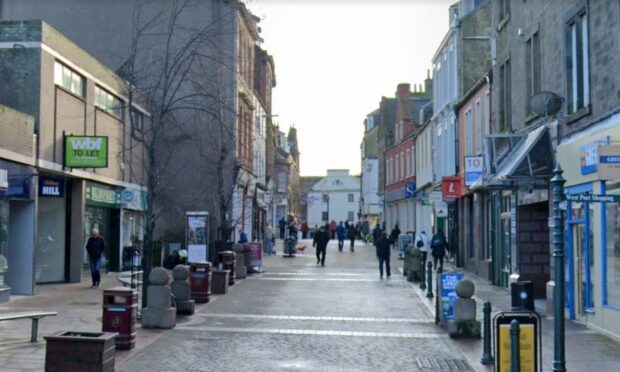Britain’s first operational military airfield may be about to give up new secrets of its important past.
As part of a project to create a green tech hub at Montrose, old Broomfield runways are to be dug up in the latest stage of the £500 million Zero Four project.
At the height of the Battle of Britain, Spitfires and Hurricanes landed on them during operations to defend Edinburgh and the Forth.
The excavations are part of a new initiative between Montrose Air Station Heritage Centre and ZeroFour, the tech hub owned by Crown Estate Scotland.
Name is a nod to military past
The innovation hub is on the north east of the Broomfield site and Zero Four takes its name from the original runway call sign, 04 22.
Montrose Air Station was established in 1913 and later became home to No. 8 Flying Training School.
It played a vital role in training pilots during both World Wars.
During the Second World War, Hurricanes and Spitfires which defended the strategically vital Forth were stationed in Angus.
In 1941, the need to urgently provide runways saw the laying of Sommerfield Tracking.
This wire mesh, nicknamed ‘tin lino’, enabled flat grassed areas to be used as improvised take-off and landing sites.
The mesh is now to be excavated, helping preserve another important part of the air station’s history.
Risk of unexploded war ordnance
Specialists will oversee the project to deal with the risk of unexploded wartime ordnance which may lie beneath the surface.
The site was surveyed in 2019 and none was found.
But the experts were not able to fully scan the ground beneath the wire mesh on the runway sections.
Parts of the site will be closed off to the public for safety reasons while the ‘tin lino’ is being lifted.
Excavations are due to get underway in September and last around a month.
Heritage centre’s support
MAHSC chairman Stuart Archibald said: “This project is a truly fitting tribute to those who helped defend Britain during two World Wars.
“The excavation of the Sommerfield Tracking will help preserve the very materials which enabled RAF aircraft to operate successfully.”
Jamie Macfarlane, built development manager at Crown Estate Scotland for ZeroFour said: “The airfield has a tremendously rich history.
“We are very excited to be working with the local community to help preserve its heritage and tell its story to a wider audience.
“Montrose Air Station Heritage Centre is an important national asset that does a wonderful job explaining the history of RAF Montrose.
“Looking to the future, ZeroFour will champion innovation and new ideas as we help support clean, green economic growth in the region.”
Zero Four will focus on the blue and green economies, including offshore wind.
In November 2021, Angus Council penned a Memorandum of Understanding with Crown Estate Scotland for the development of the 123-acre site.
A drone port as well as hotel, leisure and conference facilities are planned.
Infrastructure works are due to begin this winter.
The first serviced plots will be ready for businesses in 2023.












